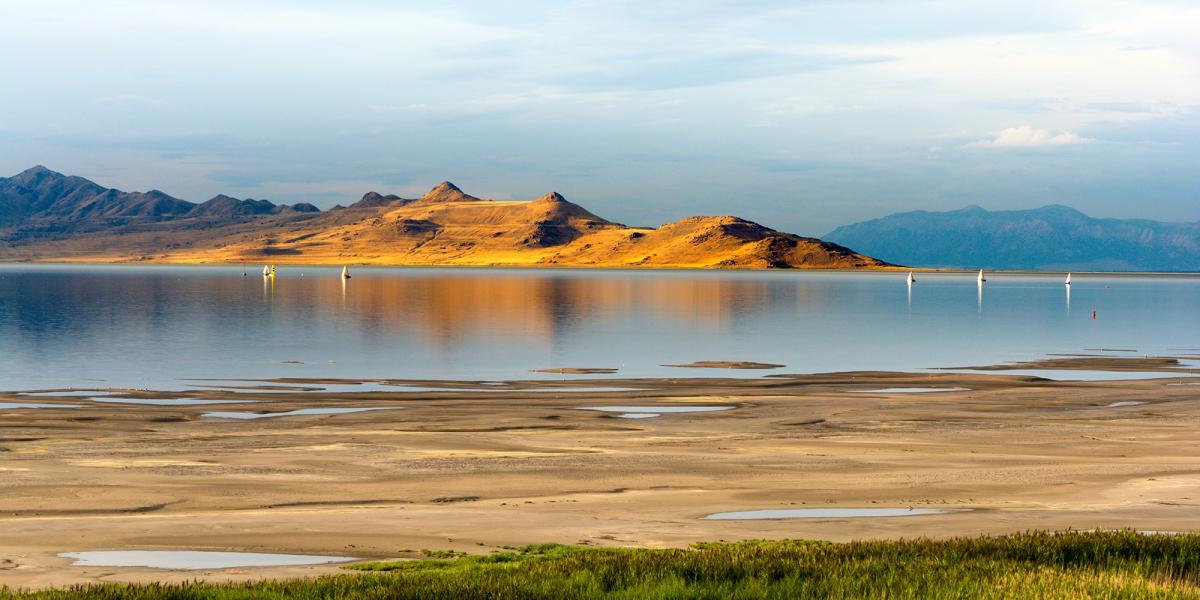Address
1 South Main St Room 20
Brigham City, UT 84302
Hours
Monday-Friday
8:00am - 5:00pm
Phone Numbers
435-734-3315

Located where the Bear River flows into the northeast arm of the Great Salt Lake, the Bear River Migratory Bird Refuge protects over 77,000 acres of wetlands — an oasis for waterbirds and wildlife. Here you’ll enjoy epic photography, wildlife watching, hiking, cycling, hunting and fishing. Check out the Refuge Wildlife Education Center for educational exhibits and events.
In spring and summer, drive the Auto Tour and see breeding American avocets, cinnamon teal, grebes and many more winged friends. You might also see American white pelicans fishing in the wetlands.
The Bear River provides about 66 percent of the water that enters the Great Salt Lake. Without the Refuge's freshwater wetlands, bird species like American white pelicans and grebes would lose a critical food source. When you visit, become a member or donate to the Friends of the Bear River Refuge non-profit organization. You can also sign up to volunteer. Learn more via the U.S. Fish & Wildlife Service.
Check out a world-renowned blend of art and nature! Spiral Jetty is an earthwork created by Robert Smithson in 1970. Located at Rozel Point peninsula on the northeastern shore of Great Salt Lake, the Jetty is comprised of 1,500 feet of coiled black basalt, which provides a stunning contrast to the pink microbe-rich waters (Read: At 50, the Spiral Jetty Keeps Drawing a Crowd).
The Spiral Jetty is not only important for art lovers. It’s also a valuable site for Westminster College’s Great Salt Lake Institute, where scientists and students are studying the extreme halophiles — the microorganisms in the colorful waters around the Jetty (Read: A Biologist Explains the Lake’s Mysteries). The Jetty is owned by Dia Art Foundation. Discover trip planning resources at diaart.org. (Visitors should be mindful that low water levels at the Great Salt Lake have increased the natural presence of tar around the Spiral Jetty shoreline. Watch your step and keep dogs on leash.)
The Great Salt Lake Institute (GSLI) at Westminster College endeavors to connect people to Great Salt Lake through research and education. You can support GSLI’s important role in building an understanding of the lake’s unique and complex ecosystem. GSLI runs community field trips and offers high school and college curricula and resources, as well as undergraduate research programs. Learn more at westminstercollege.edu.
What do you know about the original inhabitants and stewards of the Great Salt Lake’s lands and waters? There were three major bands of Northwestern Shoshone when the first Mormon pioneers began settling in Northern Utah. Chief Little Soldier headed a group of about 400, who occupied Weber Valley down to its entry into the Great Salt Lake. Chief Pocatello commanded a similar number of Shoshone, who ranged from Grouse Creek in northwestern Utah eastward along the northern shore of Great Salt Lake to the Bear River. The third division of about 450 people, under Chief Bear Hunter, resided in Cache Valley and along the lower reaches of the Bear River. (Read: Nourished By the Land: A Shoshone Perspective)
Watch a short film documenting the relationship between the Northwestern Shoshone and Antelope Island. In the past, the Northwestern Shoshone traveled with the changing seasons. They looked upon the Earth not just as a place to live but as a family member; in fact, calling the Earth their mother. She was the provider of all they needed for their livelihood. They used a variety of birds, such as ducks and geese, common along the northeast shore of the Great Salt Lake, for meat and eggs. In addition, the Shoshone harvested several varieties of insects, including grasshoppers, crickets, insect larvae and bee eggs.
Learn more about the Northwestern Band of the Shoshone Nation, including their history, way of life and plans for the future by visiting nwbshoshone.com.